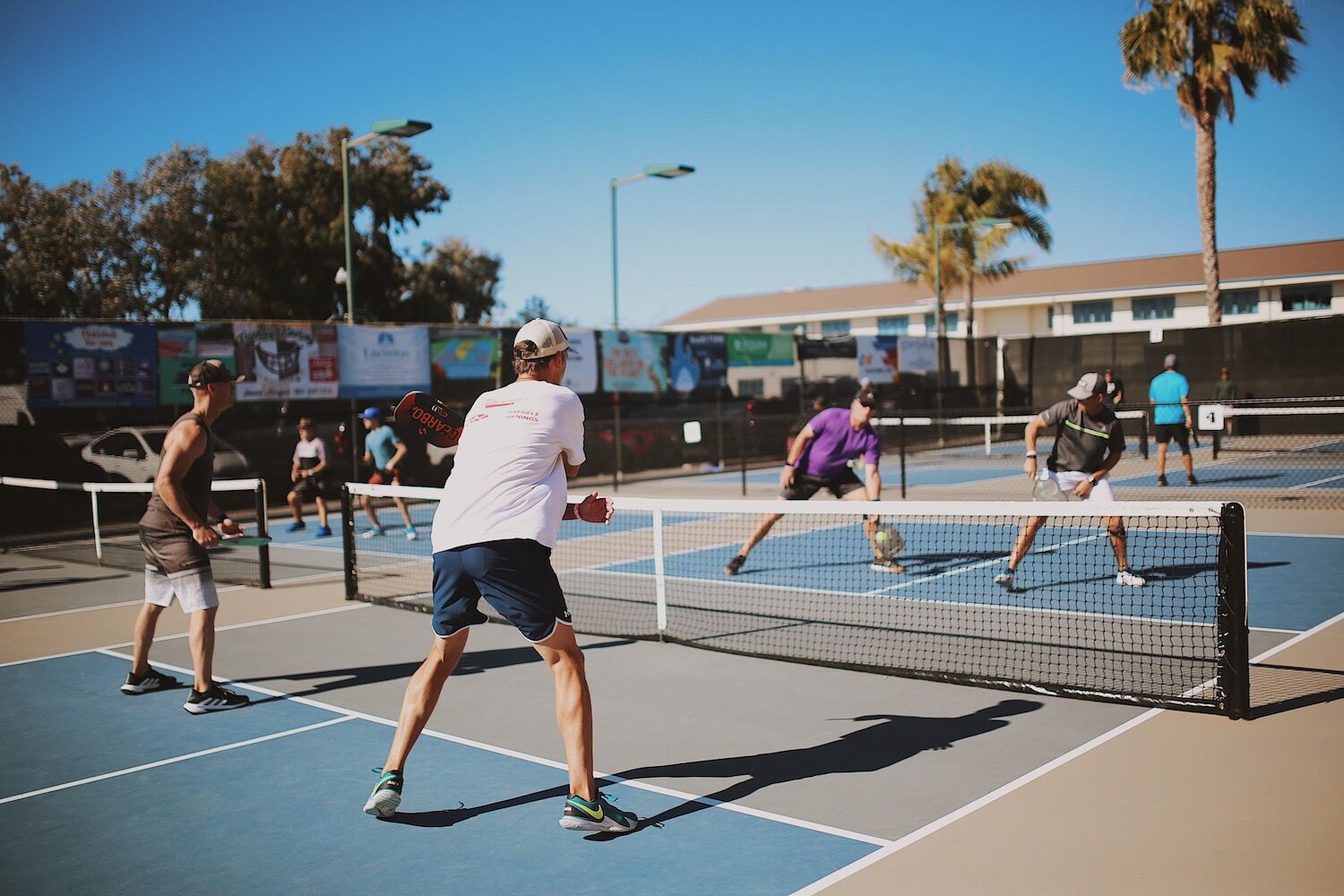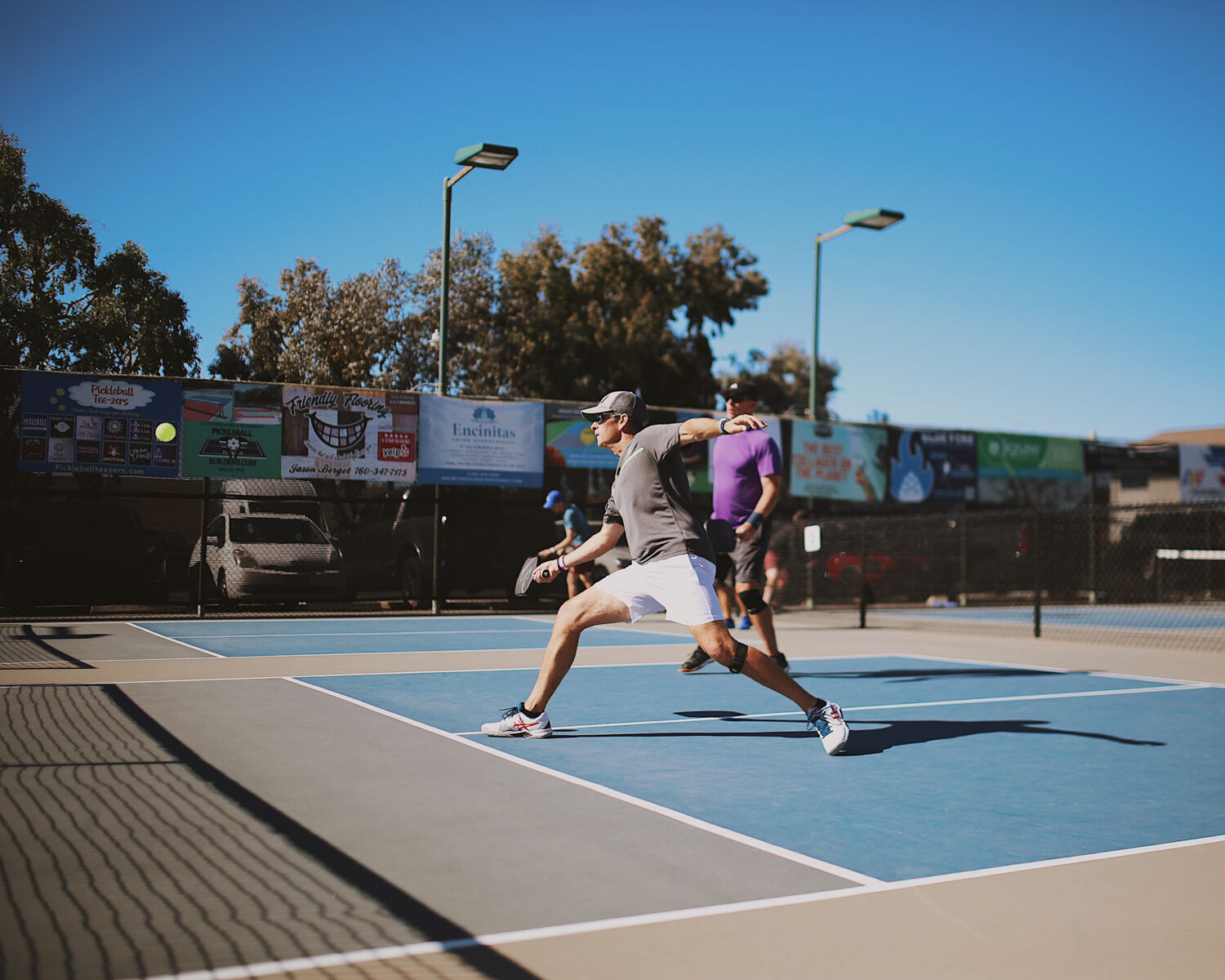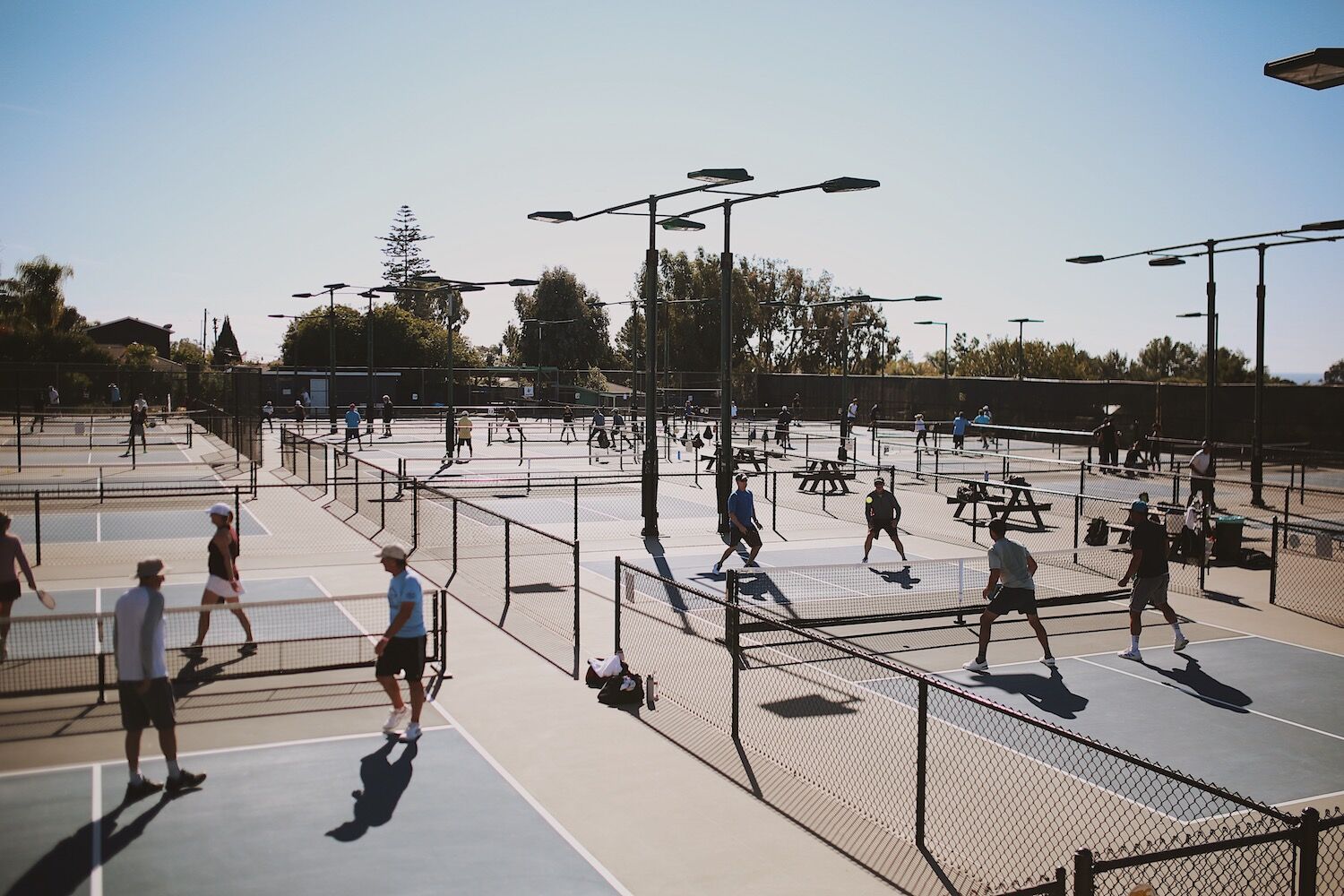
Pickleball, hero
Credit: Madeline Yang
Accusations of “Mafia tactics” and drones sent on intelligence-gathering missions. Insinuations of opportunistic money grubbing and data manipulation. Publicity stunts and PR manifestos. Finger pointing and noise complaints. First dibs versus finders keepers.
Television melodrama? Not quite. It’s the war between pickleball and tennis in San Diego, and it doesn’t seem to be cooling down.
Pickleball, widely regarded as the fastest-growing sport in the United States, doubled the number of players to nearly five million over the past five years, and that stratospheric growth has yet to slow. With temperate weather and a preexisting culture of outdoor activities, San Diego is an ideal place for pickleball to thrive. Thrive it has, converting players of all ages and abilities by the thousands.
The problem San Diego faces—along with the rest of the country—is where to put all the picklers clamoring for places to play. The city and county can’t build courts fast enough to meet demand, and while there are a handful of private facilities like Bobby Riggs Racket & Paddle in Encinitas, local pickleball advocates say the lack of public venues is the sport’s number one problem.
For two and a half years, coach Kevin Bacon has taught 60 new students every nine weeks how to play pickleball through the City of La Mesa Parks and Recreation department. He says everyone asks the same question: “Where can I play?” Currently, San Diego relies on a sparse, spread-out system of public pickleball courts across the county and has only one dedicated court in the city limits.
That isn’t good enough, says Bacon. “That would be like saying we’re going to build a bowling alley, but we’re going to put one lane in every park.”

pickleball
Credit: Madeline Yang
Even if the city found enough spaces and had the money to pay to develop a number of pickleball courts that would meet demand starting today, it would take years to work through the bureaucratic process of special-use permits, environmental studies, recreation councils, and other red tape before they could even break ground.
Pickleball can’t (and won’t) wait that long. That’s why they’ve turned to what they consider a fair compromise: taking over what they call “underutilized” tennis courts.
The tennis community is reluctant to cede ground in San Diego or elsewhere. “Our sport has grown 27 percent since Covid-19,” says John Broderick, president of the board of directors for the San Diego District Tennis Association.
“We’re trying to get more courts to support the additional players… we were trying to do that even before we knew this pickleball problem was going to come up.”
He says the local pickleball community’s “underutilization” argument is based on manipulated data, sometimes from drones flown over tennis courts during off-peak times. “They claim there’s 550 tennis courts in San Diego, when those courts are mostly high schools and colleges,” he points out.

pickleball, courts
Credit: Madeline Yang
“They’re not accessible to the public.” Todd Sprague is the current President of the Board at the Peninsula Tennis Club in Ocean Beach’s Robb Field, where in July 2022, a group of pickleballers staged a well-publicized sit-in in an attempt to bring awareness to pickleball’s comparative lack of venues. Even before the sit-in, or what he and Broderick call “the stunt,” he had been in negotiations with Stefan Boyland, co-founder of the group behind the protest, The Pickleball Association of San Diego, to find common ground between the two sports.
Sprague says sharing space is a last resort, not a quick fix. “They’re very different sports,” he says. “If somebody is playing a different sport next to you than the one you’re playing, it’s just distracting as heck.”
But tennis and pickleball champion Steve Dawson, coowner of Bobby Riggs, isn’t letting tennis off the hook quite so easily. “Tennis players don’t want to see pickleballers playing on tennis courts, even if tennis players are not playing,” he says. “I had tennis pros who used to call pickleball ‘redneck tennis,’ and those pros eventually left my club because they couldn’t stand the idea of pickleball gaining popularity.”
He says the city should be stepping up to squash tension between the two sports by either building new courts or making it easier for private developers to do so. But in the meantime, advocates on both sides are holding out hope that tennis and pickleball can both thrive, if not at least coexist peacefully, in a city that’s perfectly primed to embrace the pickle.
“Throughout the United States, all we have is acrimony between tennis and pickleball,” says Sprague. “We need something much better because it needs to be win-win. It can’t be win-lose.”



















